Don't wanna be here? Send us removal request.
Text
All You Need to Know About Buying an Amplifier for IEMs
Amplifiers are a crucial part of any sound system-be it for In-ear monitors, home theatre, car stereos or professional musical instruments.
In general, an audio amplifier is an electronic device that can make the audio signal louder. Audiophiles are already aware of the role that portable amplifiers play in the In-Ear monitors or sound systems.
However, those people who are still new in the field of sound & music should know that an amplifier is the main component to bring about the feeling of the perfect audio quality.
A great amplifier can give you the impression of being at a live concert with soaring highs, deep bass notes, and crystal-clear sound. The market is flooded with amplifiers and a beginner would surely have a tough time choosing the right amplifier for themselves.
Thus, it is so important to recognize different kinds of amps as well as what factors to look at when purchasing them. So, be it your desire to enhance your sound system, buy new studio equipment, or just want to do it for the love of audio technology, this blog will let you know some of the best tips for buying an amplifier for your needs. So, let’s get started with the basics of the amplifiers.
What are Amplifiers?
Amplifiers are electronic devices that are used to increase the power, current and voltage of a signal.
In digital audio and communications systems, they are the building blocks, which produce stronger signals from the received signals, thus enabling their further processing.
Whether it is an amplifier for In-ear monitors or a professional power amplifier for instruments, it amplifies the sound and boosts the performance of sound quality.
Exploring the Different Types of Amplifiers
The amplifiers can be divided into various categories: Preamplifier, Power amplifiers, Headphone amplifiers, Integrated amplifiers, Tube Amplifiers and more.
Most preamplifiers and power amplifiers are designed with inputs and outputs that are broadly compatible. This means that you don’t always have to use the same brand for both devices all the time.
If your amp is separate from your preamp, you can upgrade it without changing anything else. Some power amps come with a “trigger” connection which is typically a 3.5mm socket.
When this socket is connected to a compatible audio preamplifier, turning on the preamp will also turn on the power amplifier.
Preamplifiers
Preamplifiers, which are also known as preamps, are made to amplify low-level audio signals from sources like turntables, microphones and musical instruments. They are also popular for providing basic tone control as well as signal-switching functionalities. These devices usually serve as a means by which signals can be read for further amplification through a power amplifier.
Power Amplifiers
Power amplifiers are the elements liable for giving enough power to the speakers. They receive and magnify the signal which has been already amplified by a preamplifier up to the needed level for the speakers to produce noticeable sound. Power amps find extensive application in household audio systems, live sound settings, and professional audio equipment generally.
Headphone Amplifiers
Headphone amplifiers are also popularly known as headset amplifiers. These are the devices specifically designed to drive headphones. Many music players, mobile phones and laptops do not have the power to drive high-impedance headphones to their full capability. That's the reason why headphone amplifiers are used. A headphone amp has the capacity to resolve these issues by offering them enough power & control. By utilising headphone amplifiers, devices are able to deliver rich, vibrant, and more dynamic listening experiences.
Integrated Amplifiers
Integrated amplifiers combine the functions of preamplifiers and power amplifiers together as one unit. They are convenient all-in-one audio solutions that let you simplify your setup without sacrificing sound quality. Additionally, they have inputs for various sources and built-in power for driving speakers too.
Tube Amplifiers
Tube amplifiers are generally popular for their warm and natural sound characteristics. However, these amplifiers are different from those solid-state amplifiers that use transistors. Basically, it relies on vacuum tubes to amplify audio signals, resulting in pleasing harmonic distortion production for an engaging listening experience. These tube amps are generally used in premium music audio systems and by the guitarist looking for that classic tube tone. These amplifiers require some extra maintenance compared to their solid-state counterparts, as the tubes need to be replaced periodically. Overall, the feedback from the audiophiles concludes that it offers a superior sound quality which can bring a new dimension to your music listening.
Exploring the Different Classes of Amplifiers
Class A
Class A amplifiers are popular in the audio category for their high fidelity and excellent linearity. These amplifiers run by the output transistors conducting for the whole 360 degrees of the input signal cycle, making them constantly on. This further leads to highly accurate and linear amplification, making the Class A amps the best one to consider for high-end audio applications where sound is the only main priority. However, their continuous operation also results in a high level of heat generation, and power inefficiency. Therefore, much energy is dissipated as heat rather than being converted to useful output power. So, they are less practical for applications where efficiency is key.
Class AB
Class AB amplifiers are a balance of Class A and Class B amplifiers. In Class AB amplifiers, each transistor conducts for more than 180 degrees but less than 360 degrees of the input signal cycle. This further regulates a slight overlap when both the transistors are conducting. Furthermore, this minimizes the crossover distortion typically associated with Class B amplifiers. In other words, Class AB amplifiers consume more power than Class A amplifiers but still manage to maintain an acceptable level of distortion, which makes them very popular among audio source applications.
Class B
Class B amplifiers are designed to increase the efficiency of the device. Each of the output transistors operates precisely for 180 degrees of the input signal cycle. So, in the process, one of the transistors takes over the positive half of the waveform. While the other transistor works on the negative half.
The great thing about this method is that it requires much less power and generates less heat than Class A amplifiers do. And it happens since a transistor is off for each half of the cycle. This switching of the transistors introduces a kind of distortion called crossover distortion which comes about when the signal steps from one transistor to the other. The consequence here is that Class B amps are considered less appropriate for the purpose of high-fidelity audio amplifications. However, they are more likely used in setting out the efficiency criteria rather than the sound quality.
Class C
Class C amplifiers operate by minimising the conducting time of each output transistor. In Class amplifiers, each output transistor works for the input signal cycle of less than 180 degrees. Such amplifiers are most efficient because these output transistors are off most of the time. Therefore, it generates less heat and small power, making it ideal for various sound applications. However, these amplifiers are not suitable for audio applications where sound is the ultimate priority. It is because of their distortion in the output signal. Instead, these Class C amps are widely used in RF (radio frequency) applications, such as in transmitters where amplified signals can be filtered to remove the distortion. Hence, these highly efficient amplifiers are perfect for these specialised applications where power efficiency is of utmost importance
5 Specifications to Consider While Buying an Amplifier
Power Output
The power output of an amplifier is a key thing to look at because it determines both the volume and the dynamics of the sound. It is usually measured in watts and should match with the suitability of the speakers.
Noise & Distortion
The term Total Harmonic Distortion + Noise (THD+N) describes the amplifier’s level of distortion and interference. A lower THD+N value means that the produced sound is more clear and accurate. So, when shopping for an amplifier, you should look for an amplifier that has low THD+N values to ensure high-fidelity audio output.
Signal-to-Noise Ratio
When looking for an amplifier the importance of the signal-to-noise ratio (SNR) should not be underestimated. It signifies the ratio of the desired audio signal to background noise. The higher this value is the better because it means that the audio amplifier will produce clearer and more detailed sound, especially at lower volumes. Therefore, if you want your music or movies to be of high quality make sure you have a good SNR.
Crosstalk
Crosstalk is the interference between the left and right channels of a stereo. It can ruin the stereo image and also the overall sound quality. In choosing an amplifier, take note of its crosstalk specification as this will help reduce any unwanted signal jumping from one channel to another. Thus providing you with a more immersive music listening experience.
Inputs and Connections
To determine the versatility and convenience of an amplifier, you may look at the inputs and connections it offers. You should also check the compatibility with audio sources through the kinds and quantity of inputs like RCA and digital inputs. Besides, features such as Bluetooth connectivity or USB input may also help in increasing functionality as well as ease of operation for the amplifier.
Key Takeaway!
Overall, Amplifiers are the most important part of a sound system whether it is an IEM or a speaker without which one can never have a good listening experience. So, knowing about the amplifiers in detail and the specifications is so much of importance. While purchasing an amplifier, being mindful of these specifications will definitely help you in finding the ideal one for you. So, get the right one now!
1 note
·
View note
Text
Understanding Different Kinds of Eartips for your Earphones
Are you rid of falling out of your earphones from your ears while enjoying your music hours? Are you also feeling the sound quality lacking and feeling discomfort after long-hours of listening? All these problems boils down to only one issue and that is your "Eartips''.

Eartips are one of the most important components of an earphone which can instantly either brighten up your listening experience or degrade your listening experience.
Eartips can directly affect your comfort, sound quality and your overall listening experience. Hence, In this blog we will be discussing the different kinds of eartips available in the market nowadays for use and will help you make understand which might be the best fit for your ears. But before that, we will be understanding the importance of the eartips for your ears.
What Eartips Actually Are?
Eartips are small covers that snugly fit over the earphone speakers and insert comfortably into your ear canal. These eartips are often interchangeable that can upgrade your entire music listening experience.
Eartips might be seen as insignificant but in actual sense eartips are of utmost importance as they play an important role in how an earphone performs. Best earbud tips are made from various materials to offer you the comfort that you need while listening to the songs.
Importance of a Proper-Fit for In-Ear Monitors
A good fit is really needed for a thousand number of reasons. First and most important reason is that it ensures that the sound is delivered directly into your ear canal that allows for optimal sound quality.
In addition, a perfect fit will help you in blocking out all the external noise which is of utmost importance for musicians who always need to be able to hear their own performance clearly on stage.
Other than this, another important aspect of the proper fit to mention here is comfort. In-ear monitors that do not fit perfectly can be uncomfortable to wear for extended periods and this further can lead to fatigue and pain in the ear.
Exploring the Different Types of Eartips for IEMs
Rubber Eartips
Rubber tips are the most commonly used in the IEMs. These eartips are popular among the users for their durability and affordability. Rubber material offers the users a snug fit, making it ideal for those who really need a secure seal during intense physical activities like workout sessions.
However, rubber eartips can sometimes be less comfortable and hence, not comfortable for extended listening. The reason why it is not comfortable for long periods of use is because the material is not as soft or pliable as other options present in the market nowadays.
Other than this, these rubber eartips may not be able to provide the best sound isolation which instantly impacts the listening experience in a noisy experience.
Silicone Eartips
Another popular eartips among the users is silicone eartips. They are crafted using a soft, flexible material that fits well to the shape of the ear canal. These ultimately provide a comfortable fit even during long listening sessions.
The silicone eartips are also hypoallergenic, which makes these eartips suitable for earphone users who have sensitive skin.
One of the main benefits of the silicone eartips is their ability to create an excellent ear seal, which enhances sound isolation and bass response.
However, these eartips can sometimes slip out more easily than the others and especially when the users' skin is oily.
Foam Eartips
Next up, Foam ear tips are well known & cherished for their exceptional comfort & superior noise isolation. These are expertly crafted from the foam material that enables them to expand to fit the unique shape of the ear canal.
These eartips further offer a custom-like fit to the users for better listening experience. This expansion not only ensures a secure seal but also significantly reduces external noise, making foam eartips an excellent choice for use in loud environments.
The main drawback of foam eartips is their durability. That is why these eartips tend to wear out more quickly than silicone or rubber eartips, requiring more frequent replacements. Additionally, they may absorb moisture which can affect hygiene and longevity.
Hybrid Eartips
The best thing about hybrid eartips is that they combine the benefits of the different materials to offer a balanced listening experience.
Basically, these eartips feature a silicone exterior for a secure and comfortable fit, while the inner core is crafted from a firmer material to ensure structural integrity and durability.
This combination allows hybrid eartips to offer the comfort and sound isolation of silicone eartips with added stability and longevity.
All in all, these hybrid eartips are an excellent choice for users who want the best of both worlds and do not mind investing in a slightly more expensive option.
Liquid Silicone Eartips
Liquid silicone eartips are a newer and more advanced form of silicone eartips. They are crafted with a combination of metal alloys from inside and silicone material from the outside.
These eartips are designed to fit the ear canal for better music listening experience. They are more resistant and crafted well to last longer, hence making it a good alternative to standard ones.
Custom Eartips
These custom eartips are best for users who are looking out for ultimate comfort and sound quality. They're well crafted from molds of the user's ears, ensuring a perfect fit that is unmatched by any universal eartip.
These eartips are further capable of providing exceptional noise isolation and a secure seal too, enhancing the entire audio experience. Custom eartips are particularly best among the audiophiles and professional musicians.
The reason is its consistent performance while offering the ultimate comfort to the users'. However, these eartips cost so much & generally require specialised service to craft these molds.
Comply Air Foam
Comply Air Foam eartips are one category that represent innovation in the realm of eartips. These eartips are curated with the most unique and breathable memory foam.
This material easily adapts to the shape of the ear canal while allowing airflow. The comply ear tips designs like this reduces pressure inside the ear, providing a more comfortable and natural listening experience.
The breathable foam also helps to keep the ears cool and dry, which can be particularly beneficial during extended use. Furthermore, these eartips offer excellent noise cancellation and a secure fit. This makes them a great choice for the users looking for both comfort and high-performance.
However, these days some exciting experiments are taking place in eartip materials. There are some manufacturers nowadays who are designing comfy eartips using different materials.
These combinations are designed to offer customized fit to the users' for personalized listening experience. They are also crafted to enhance the acoustic properties of the In-ear monitors.
These are one of those experiments that are tailored to cater the diverse needs of individuals. This ensures that each user will be able to get something that will perfectly combine their preferences and the requirements.
As the eartips market continues to evolve each day, we can expect better & newer advancements in the eartip technology for making the listeners experience more enjoyable & entertaining.
4 Tips to Choose the Right Eartips for your Needs
To choose the perfect eartips one needs to consider various factors on the basis of which they can choose the right eartips. These factors can be the ear shape, comfort preferences and intended use and so much more like this.
Trying Out Different Materials
The market has loads of eartips like silicone eartips, memory foam eartips, hybrid eartips and so much more. You can try out and experience different types to see which material offers the best comfort and sound quality to you.
Take Note of your Activities
Consider what type of activities you always take part in, such as exercise, dance, gym, run, and more. If you are more active then utilise the eartips that provide a secure fit and good stability.
Analyze Sound Isolation Needs
In case you are most likely to be around noisy environments, you need to prioritise eartips. The well-fitted eartips will offer you unmatchable noise isolation.
Check the Compatibility of the Eartips
Before buying eartips for your earphones, you need to look & check for the compatibility of the eartips with your earphones.
Takeaway!
In summary, Eartips are an integral part of an earphone or IEM. Eartips are something that directly affects the listening experience of an individual. Knowing the different types of eartip for IEM will help you out in deciding the perfect eartips for your needs.
By understanding the different kinds of eartips you will be able to get a perfect eartip that will provide your ear with an excellent listening experience while offering comfort to your ears.
The eartip market has everything that an individual can ask for whether it's custom mold, foam or any other eartips. So, if you're also looking for a perfect eartip for yourself then understand the types and then think which suits you better among them.
0 notes
Text
The Future of Audio Unveiled: The Rise of Type-C Earphones
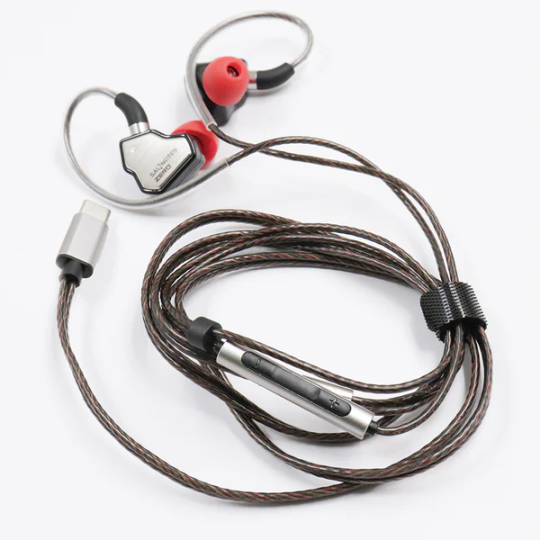
In an age of continuous technological innovation that reinvents our daily activities, audio is not left out. The introduction of Type-C earphones is a revolution in the way we listen to music and talk and communicate with our devices. The era of twisted wires and connectivity challenges is over; this is the era of effortless and improved sound.
The move away from the headphone jack in favor of the Type-C connector is a step towards a more convenient and user-centered audio future for people. More and more smartphones and gadgets use the Type-C interface, so it is logical that earphones must also adapt. Thus, the transition will simplify the connection process and will allow the implementation of new audio-technical solutions.
The Convenience Factor
The most attractive thing about Type-C earphones is just how convenient and adaptable they are. The reversible connector means that you’ll never have to worry about getting the plug ‘upside down’ ever again. Such a minor thing significantly enhances the user experience by removing a big source of the daily life’s little frustrations. Furthermore, the broad compatibility allows you to use them with your smartphone, tablet, gaming console, laptop, and any other device in the household. There’s no need to purchase an adapter or a dongle to keep using your favorite gadgets.
Superior Audio Quality
In addition to their convenience, Type-C earphones also offer superior audio quality. Thanks to the more advanced digital-to-analog converters and amplifiers, Type-C earphones faithfully recreate the music and other sounds playing on your mobile device with better clarity and detail. In other words, whether you’re a fan listening to your favorite tunes, a professional completing a conference call, or a gamer on the road, Type-C earphones make the mobile audio experience sound better than ever.
Many Type-C earphones also use active noise cancellation to improve their audio quality by blocking out any ambient noise and interrupting the listening experience. This feature will be especially attractive to constant travelers who also use headphones professionally and generally, anyone who enjoys being pulled into their audio content.
Sustainability and Innovation
Finally, global trends towards eco-awareness indicate that the transition to Type-C earphones is also a move to sustainability. By minimizing the necessity for separate headphone jacks and decreasing electronic trash, companies are starting to work in a way that is more environmentally friendly . Moreover, implementing Type-C connectors will enable future audio technology developments, enabling progress and stretching the boundaries of the feasible.
Conclusion
We hope you have enjoyed this preview of the future of audio. Type-C earphones are a groundbreaking solution that demonstrates ongoing innovation and an increased quality of life. They enrich everyday life by providing fewer cable tangles, better noise quality, and more respect for the environment. While their cost might not be accessible to everyone at the moment, the ubiquity of such products in the future will reduce their price range. Whether you are a music lover, a frequent traveler, or a big tech fan, type C is the way to go. Stay ahead of the game and surround yourself with the sound of the future.
If you want to check out type C earphones click Below: Best Type-C Earphones 2024
1 note
·
View note
Text
Different Types of Eartips. How to Choose best Eartips for your In Ear Monitor.
In the realm of audio aficionados, the In-Ear Monitor (IEM) stands as a pinnacle of personal audio experience. Offering immersive sound quality and unparalleled portability, IEMs have become a staple for music lovers and professionals alike. Yet, amidst the allure of crisp highs and resonant bass, there lies a critical element often overlooked: the humble eartip.

Eartips, those small silicone or foam sleeves that adorn the ends of our IEMs, are more than mere accessories. They are the unsung heroes responsible for delivering sound directly into our ears with precision and comfort. Think of them as the gateway between you and your audio nirvana.
Why do manufacturers provide a variety of eartips, ranging from small to large? The answer lies in the diversity of human anatomy. Just as our fingerprints differ, so do the shapes and sizes of our ear canals. A one-size-fits-all approach simply won’t suffice when it comes to achieving optimal sound isolation and comfort.

Enter the world of eartip materials: silicone and foam. While both serve the same fundamental purpose, they each offer unique characteristics tailored to individual preferences. Silicone eartips are known for their durability and ease of cleaning, providing a reliable seal for consistent sound delivery. On the other hand, foam eartips conform to the shape of your ear canal, offering superior noise isolation and enhanced comfort over extended listening sessions.
But how does one navigate the labyrinth of eartip options when shopping online? It’s a daunting task, to say the least, without the luxury of physically trying out different sizes and materials. Fear not, for armed with knowledge, you can make an informed decision.

Consider factors such as your ear canal size, preferred level of noise isolation, and desired comfort level. Reading user reviews and seeking recommendations from trusted sources can also provide valuable insights into which eartips may suit your needs best.
In conclusion, this article aims to serve as a beacon of guidance in your quest for the perfect eartips. Whether you're a seasoned audiophile or a casual listener, understanding the nuances of eartip selection can elevate your audio experience to new heights. So, let us embark on this journey together, as we uncover the secrets behind selecting the Best Eartips for In-Ear Monitors.
Different Type of Ear Tips
1. Rubber Ear Tips:
Rubber ear tips represent the most basic type of eartips, often included with budget-friendly IEMs. While they may seem like a convenient option, they come with drawbacks. Rubber tips tend to be harder and less comfortable than other materials. Moreover, they have a higher likelihood of causing irritation to the skin due to their rigid nature. Consequently, they are generally not recommended for prolonged use with IEMs.
2. Silicone Ear Tips:

Silicone ear tips offer an improvement over rubber ones in terms of comfort and irritation. They are softer and gentler on the skin, making them more suitable for extended listening sessions. However, silicone eartips may not be the best choice for activities like exercise or running, as they can become slippery and prone to falling out when exposed to moisture. Despite this drawback, silicone eartips are relatively easy to clean, providing a durable option for everyday use.
Additionally, silicone ear tips come in various designs, including domes with different flange choices. These flanges, ranging from single to double or triple fringe, offer users the flexibility to find the perfect fit for their ears, enhancing comfort and sound isolation.
3. Foam Ear Tips:
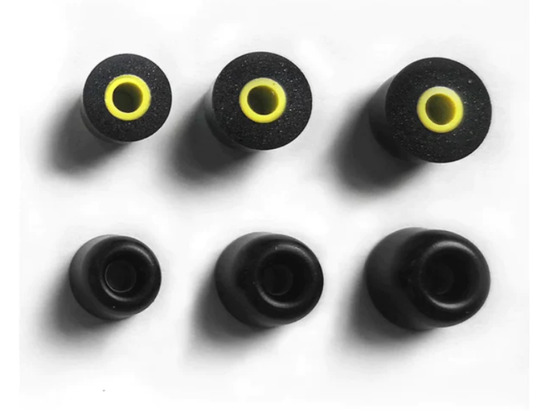
Foam ear tips reign supreme in terms of comfort, resembling earplugs with a hole through the center. They are designed to fit snugly inside the ear canal, creating an effective seal that isolates sound from the outside world. This superior seal not only blocks out external noise but also results in increased bass response and decreased highs, enhancing the overall listening experience.
Foam eartips are favored by many audiophiles and professionals for their exceptional comfort and sound quality. They mold to the shape of the ear canal, ensuring a personalized fit that minimizes discomfort during extended wear.
4. Comply Air Foam:

Comply Air Foam ear tips represent an evolution of traditional foam eartips, offering several feature upgrades. Similar to foam eartips, Comply Air Foam tips provide unparalleled comfort and sound isolation. However, they incorporate advanced materials and construction techniques to further enhance performance.Features such as breathable cores and improved memory foam ensure a secure fit and extended durability. Additionally, Comply Air Foam tips are designed to maintain their shape and sealing properties even in humid conditions, making them suitable for active lifestyles.
5. Hybrid Eartips:

Hybrid eartips, a less common option in the world of eartips, blend the characteristics of both foam and silicone materials. These unique eartips typically feature a silicone outer layer with a foam core, combining the durability of silicone with the comfort and sound isolation of foam.
While hybrid eartips could seem to offer the best from both worlds, they're far less common in comparison to their pure silicone or foam counterparts. There could be many factors as to why these aren't as popular, such as the complexity of manufacturing and limited demand from consumers. Either way, these have an appeal to them that will resonate with a lot of people that want a balance between comfort, durability and quality sound. Either way, some may find it difficult to find the right fit, but that's something we're already acclimated to, right?
How to choose comfortable best eartips for your IEM
Choosing the Best Eartips for Your IEM:

Picking the best eartips for your In-Ear Monitor (IEM) is a different foray altogether, as the human ear canal is a diverse thing. Each person's ear canal has a distinct size and shape, which means all types of sizes and materials must be available for eartips. From the soft, plushy foam to a harder, resilient rubber eartips that offer densities based on listener preference, manufacturers create a gamut of options that satisfy these demands. Foam eartips emerge as a winner in the comfort category, given the eartip has the ability to conform to the exact shape of any ear canal. These eartips can offer a snug fit that doesn't cause discomfort over long listening sessions plus the plushy feeling doesn't hurt, either. These are a popular choice among audiophiles and casual listeners, alike.
Eartips Durability

In terms of durability, silicone ear tips have the upper hand in this category. Constructed of a tough building material, these eartips have the ability to take a beating and last for many years without a noticeable degradation in quality. Because the material is so resilient, these eartips will maintain their shaping sealing properties over time, so listeners can expect their sound to remain consistent throughout their lifespan.
Foam eartips are also less durable than silicone eartips. While they offer optimal comfort, they are susceptible to earwax and dirt contamination. As earwax and dirt build up on the eartips, their performance will be compromised over time. Here are tips to prolong your eartips' lifespan:
Tips for Prolonging Eartip Lifespan
Aside from choosing the proper size of eartips, it's imperative to handle them with care. Always handle eartips with clean hands to avoid transferring dirt and bacteria. It’s equally important to avoid exposing eartips to excessive moisture or heat, as this can expedite their degradation. Proper IEM maintenance also helps in preserving the lifespan of their eartips.
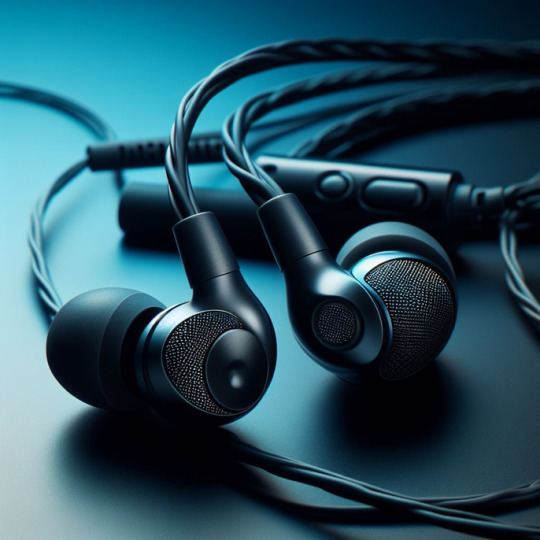
Regularly clean your earpieces and eartips to prevent the accumulation of earwax and debris, thus ensuring optimal hygiene and performance. Lastly, storing your IEMs in a protective case when not in use will shield them from damage and enable them to be enjoyed for an extended time. By practicing these eartip and IEM maintenance practices, you can rest assured that your eartips and IEMs will continue offering exceptional sound quality and comfort for years to come.
Chossing the different Size of Eartips:
Choosing the Right Size of Eartips for Your IEM:
Selecting the correct size of eartips is crucial for achieving optimal comfort, sound isolation, and audio quality with your In-Ear Monitor (IEM). When you buy IEMs online, it’s nearly impossible to discern which size to choose without physically trying them on. Here’s how you can make an informed decision:
1. Review Manufacturer Guidelines: Many IEM companies offer sizing recommendations or guides based on their eartip dimensions and average ear canal sizes. Reference these guidelines to gain valuable insight into which size may be right for you.
2. Measure Your Ear Canal: If possible, measure your ear canal diameter using a calipers or ruler and compare it to the dimensions provided by the manufacturer to find the eartip size to order. Make an educated guess.
3. Consider Your Comfort Preference: While some individuals like to have eartips that are a size down for increased noise isolation, others prioritize comfort and will prefer eartips that are a size up. Your personal preference and tolerance level will dictate what size is best for you. This is one reason why replacement eartips are usually sold in sets; some experimentation is required.
4. Read User Reviews: While it can be hard to come across this kind of information for certain earphones, minimizing the risk of ordering the wrong size is a big advantage of buying replacement eartips that other people have tried or tested.
5. Experiment with Multiple Sizes: Try to find a pair of IEMs that comes with a variety of eartip sizes so you can experiment with different sizes.
6. Consider Exchange Policies: While there are third-party eartip companies that do not allow earip returns, many manufacturers will send you a set of eartips of a different size at no charge, so it's not a bad idea to make sure this is an option.
7. Ask For Help: If you feel like the eartips will be the part of your earphones that need replacing most frequently, you may also want to consider asking for advice on what size would be most appropriate for your ear.
By taking all of these factors into account and utilizing available resources, you can drastically increase the likelihood that you’ll choose the correct size of eartips – even if you’re buying them online.
Conclusion:
Hopefully you now have a better understanding of the importance of IEM eartips and have found the information in this guide useful. They’re often an overlooked yet critical component of the earphone. With so many varieties to choose from, finding the right eartips for your in-ear monitors can often be somewhat of a daunting process. We do hope that this article has helped to alleviate the common issue many people face when trying to find these ever-elusive eartips. If this is the first IEM that you’re purchasing, welcome to the world of great sounding music wherever you go; these things can be a fantastic investment that last for years if cared for properly. Remember to protect your hearing and avoid having the music too loud in your ears.
1 note
·
View note
Text
Unveiling the Audiophile’s Delight: Sennheiser In-Ear Monitor IE 200 IEM Review
Out of the entire audio technology world, there is one great brand that has been standing at the forefront of relentless pursuit of sonic excellence, and this is Sennheiser. From its founding back in 1945 in Germany, Sennheiser has become one of the groundbreaking pioneers in the creation of a remarkable number of audio products from headphones to earbuds, always steps ahead and setting the highest standards with innovation and quality.
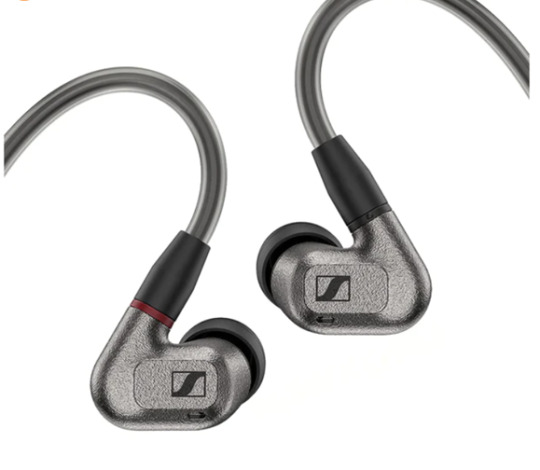
It is a brand that has long become a synonym to a perfectly engineered systems and uncompromising sound transference. What is raising this brand above and beyond the fierce competition in the audio technology market that continues to grow with each new invention?
There is not a single simple answer to this question, but it is the finely tuned combination of many factors: the utmost precision in design and engineering, coupled with a relentless drive to innovate, test and introduce the most cutting-edge and unprecedented solutions in delivering a flawless sound.

In short, it is Sennheiser’s dedication to perfection that will secure them a persistent spot on the lists of recommendations of any audiophile or a regular music lover. Today we explore one of their most recent releases — the Sennheiser In-Ear Monitor IE 200 IEM.
Among a variety of available options, we selected this product for review for a number of reasons. Why is this set worthy of attention, and what makes it different from the alternatives available on the market? Let us explore the latest Sennheiser creation and find out what makes IE 200 IEM worth setting the standards users will appreciate.
Product Specification
Several product specifications of the Sennheiser IE 200 IEM indicate certain details on product’s character and specifics, defining its customer use.

To begin with, a single 7mm dynamic driver present in the speaker’s design serves as the transducer. I believe that to be essential for audiophiles and music lovers, who are interested in hearing this or that classic piece of gear and don’t forgive the misrepresentation of the critical one, concerning the release as a result.
With regard to the product’s other properties, I am going to focus on the simplicity of the IE 200 design and elaborate its suitability and convenience for being used as analog if it is possible.
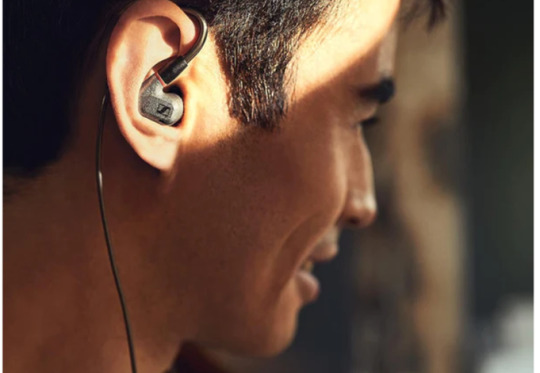
Being manufactured from lightweight plastic shells that also provide better comfort during the wearing process, the Sennehiser IE 200 In ear Monitor approach simultaneously increased the performance by making the item more robust.
Moreover, it has implemented the air pressure port to optimize the usage even further, which makes it suitable with all types of ear tips that keep the product in place and doesn’t affect the performance quality by decreasing the isolation and allow one to wear the speakers firmly secure.
The implementational component contains the MMCX connector and a 3.5mm jack on the other side of the 1.3m cable covered in fabric; additionally, the two type of ear tips – foam and silicone – are provided in three sizes to fit any shape and size of the ear. Finally, a carrying pouch also comes with the product.

In terms of specifications, I can claim, that the frequency response range of 6Hz to 20kHz, impedance of 18 ohms, and lightweight of 4.1g are acceptable.
It seems that with the IE 200, Sennheiser has introduced all of its proprietary technologies to provide the best possible sound quality, and the IEM does not disappoint in terms of its sounding experience. With a sound pressure level of 119dB, it delivers powerful and dynamic sound without distortions.
Additionally, the IEM has only 0.08% of harmonic distortion, meaning that the music is played with exceptional level precision and detail. As a result of all these efforts to provide an outstanding sounding experience, the low-end of IE 200 shines most brightly. It is full and deep as well as present and impactful.
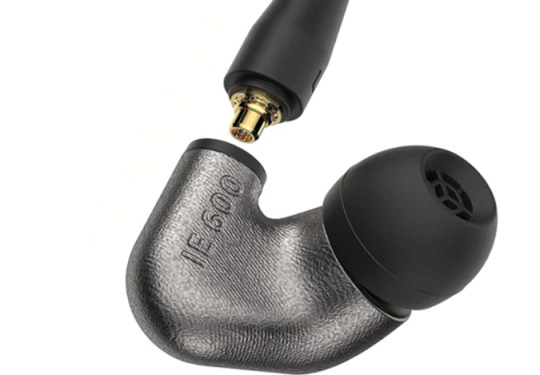
Thus, no matter if you are listening to the concerto of a guitar or synthesizer, you will be able to experience the natural music and its discrete details. In addition to its outstanding sound delivery, IE 200 has a universal design that can be fitted into almost any ear.
According to the Sennheiser IE 200 manual, its weight is only 4 grams, so it is comfortable even to wear them for a long period. In such a way, the characteristics of sounding and design make IE 200 appealing to both experienced music listeners and those who are just discovering the possibilities of in-ear headphones.

Finally, IE 200 IEM has affordable prices, so those who prioritize quality in audio but cannot spend massive sums of money on expensive models would please both factors and choose it.
Conclusion
Focusing on every detail from its lightweight and customizable construction to its wide frequency response range and minimum total harmonic distortion, the IE 200 is made to deliver high-quality sounds at a lower budget.
Be a professional musician who demands a perfect sound match on any music type or a typical listener who just wants to hear his favorite songs without any interruption – Sennheiser IE 200 is the best match to meet all of your requirements.
Extensive treble, warm and forward midrange, and a decent mid-bass bump result in a musical sound that attracts listeners become more and more absorbed, immersed, and drawn, making it possible to discover something you had previously missed in your favorite tracks. The combination of the top-notch build with improved ergonomics and constant sound quality justifies “IE 200 ” as the most worthy contender in the modern market workplace. Thus, what are you going to choose in the end? Just try to avoid shrugging off the fact that Sennheiser IE 200 is not only balanced headphones but a piece of the purest quality and professional sound, cables, and integrity that can undoubtedly compliment your personality. Be the best you can, and you will see that mistakes you usually make disappear.
#sennheiser#music#audio#sound#sounddevices#headphones#recording#locationsound#yamaha#recordingstudio#neumann#pioneerdj#audiotechnica#soundmixer#live#sony#sennheiserhd#microphone#audiophile#homestudio#iem#InEarMonitor#audiophiles#audioporn
0 notes
Text
Beginners guide to Audiophile – How to become a perfect Audiophile
In a world dominated by music streaming services and earbuds, there is a world of passionate, dedicated people who go far beyond listening. But who are these people, and what distinguishes them from the average music listener? An audiophile is a person who doesn’t ‘just ‘listen to music. He or she listens to music on the highest possible level. But how do you know that you are an audiophile? In a world dominated by music streaming services and earbuds, there is a world of passionate, dedicated people who go far beyond listening. But who are these people, and what distinguishes them from the average music listener? An audiophile is a person who doesn’t ‘just ‘listen to music. He or she listens to music on the highest possible level. But how do you know that you are an audiophile?
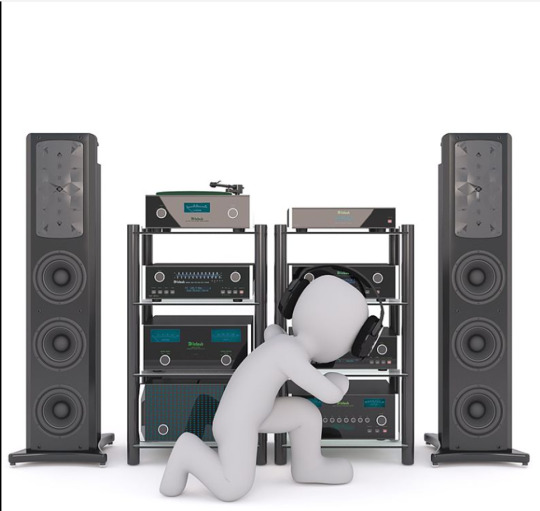
An audiophile feels that music is more than a soothing background to some other activities, such as parties or social events. Even though these people still find the beat of music enjoyable, audiophiles are more into catching the small nuances.
One of the principal highs an audiophile values in life is the pulse of sonic perfection. It is not necessarily price or sound reproduction, let’s say, the most advanced technology equipment as earbuds with mic. By hook or by crook, an audiophile tends to become a part of the high-quality audio. In the context of high accounting and loyal customers for the roots of the audio industry, audiophiles are not acknowledged to be consumers. They become devout elite customers or connoisseurs whose opinions are valuable enough to be taken into consideration by manufacturers and other listeners. They want to become a part of the high-quality listeners in their pursuit audiophiles set the tone for the industry in terms of sound and mechanics.
However, the heart of it all is the sonic pulse an audiophile long for. It is not doomed to sound better because it is the flag for the most expensive piece of equipment in the store.
Qualities of best Audiophiles
1. Obsessed with High Quality Music
The singularity that most clearly defines myself as an audiophile is my stubborn obsession with high-quality music. For me, the act of listening is not merely functional – it is a way to perceive music as it is meant to be. I bask in the metaphors meticulously concealed within the albums and tracks I play. When, say I listen to the acoustics of a guitar string or hear the cymbal gently wail away, I feel utterly content. The driving force of my passion is my obsession with meeting the highest standards: establishing the best audio equipment and configuration to maintain the audio quality at the highest levels. I also know a lot about audiophile gadgets and think that the best version of audio is and has always been sought by audiophiles.
2. High Knowledge of Audiophile Gadgets:
An audiophile’s toolkit is not limited to headphones or speakers. Our gadget expertise also allows us to make informed choices when it is time to obtain a new piece of equipment. Audiophiles enjoy learning about sound engineering and experimenting with new concepts and technologies. They now know about the dual driver technology that focuses on frequency differentiation.
3. Looking for the best Audio Version

When faced with the choice, they take it into consideration and strive to deliver the best of their options. They love discussing the advantages and disadvantages of different cabling types, and how their choices might affect the final product. They deal with the diaphragm geometry and why it is important, the merits of the titanium diaphragm, for example. Amplifier circuitry and how it affects the listening spectrum are also part of the pool of knowledge, which makes audiophiles as they are. In addition, I am one of such people, as I spend countless hours testing the equipment to find the best version of audio and ensure that listening experience is maximized.
4. Skill and Interest:

One of the defining attributes of an audiophile enthusiast is their immense skill and interest in their hobby. Audiophiles have an almost superhuman ability to focus on one particular thing for hours on end without tiring or losing interest . This allows them to carefully fine-tune audio parameters and their system overall to ensure that the desired performance level is reached. It also means that audiophiles are very passionate about their chosen hobby, and this passion is often times contagious, encouraging others to become enthusiasts of high-quality audio as well.
5. Aim for the Highest:
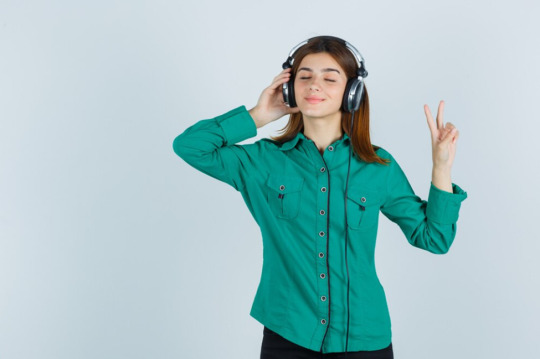
Audiophiles often do not acknowledge mediocrity and instead strive to reach the highest levels of audio performance. In their desire to be recognized or to help others reach the same level, they constantly work on expanding their skill, knowledge, and experience.
Whether that involves teaching people how to utilize their gear in the most efficient way or getting communities of audiophiles together, these enthusiasts are always striving to do something more than what they are already doing.
Important Audio Equipment used by Audiophiles
1. . Digital-to-Analog Converters(DACs) and Amplifiers (Amps):

Amplifiers are used in audio systems to drive and pump audio signals. The best amplifiers and DAC are audiophile-quality: they are free from any audible distortion and coloration of the sound. Models chosen by audiophiles are either based on the transistor technology or the older tube design and are specifically chosen based on how transparent they are, how much usable power they can output, and how well, smoothly, and clearly, they can drive the system they are powering.
Proper transmission of a digital signal to an analog signal is one of the most important aspects of high-quality sound. The DACs that audiophiles choose are perfect in terms of compensation, linearity, and handling of the imperfections of the analog signal. They allow the listener to preserve all the elements of the sound both music itself and how it was recorded and are specifically chosen based on whether they can use advanced jitter reduction technology and support for high resolution playback.
3. In-Ear Monitors:
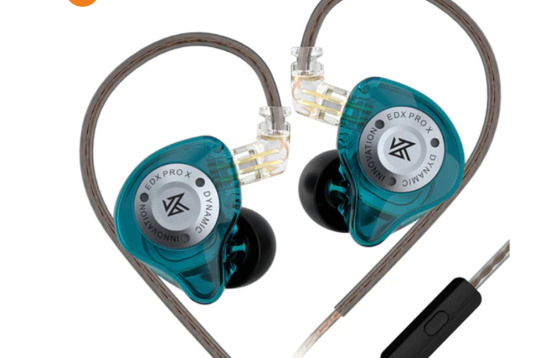
In-Ear Monitors, also known as IEMs, are compact headphones designed to fit snugly inside the ear canal, giving you maximum sound isolation and audio quality. Audiophile In-Ear Monitors are equipped with high-quality drivers, precisely engineered crossovers, and premium materials to deliver accurate and lifelike sound quality. Because IEMs can be customized to perfectly fit your ears, you won’t have to compromise an inch of sound and comfort quality. With their combination of comfort and quality, IEMs are a beloved solution to high-quality listening by many music lovers on the go.
4. Audiophile Headphones:

Headphones are arguably the sine qua non of audiophilia; after all, nothing puts you closer to the music than speakers for each ear. Audiophile headphones come in closed-back, and open-back designs give you a choice of noise isolation or sound staging. Across the board, audiophile headphones are built to last, with titanium, aluminum, steel, and high-grade leather as popular materials. With their unbeatable comfort and sound quality, every high-quality system has the perfect headphones for you.
5. Preamplifiers:
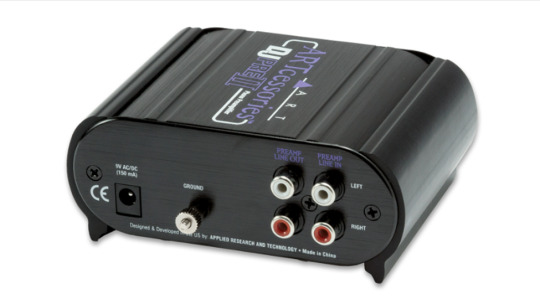
Preamplifiers, or preamps, are an essential link between your audio device and power amplifier. They allow you to adjust the balance and tone of your sound source before amping it. High-quality preamps come with precise volume controls, low noise operation, and sophisticated tone shaping options. They can be individual components or built into amplifiers and are an investment into the proper functioning of all components in your system.
How to setup your audio system
1. Selecting High-Quality Equipment:
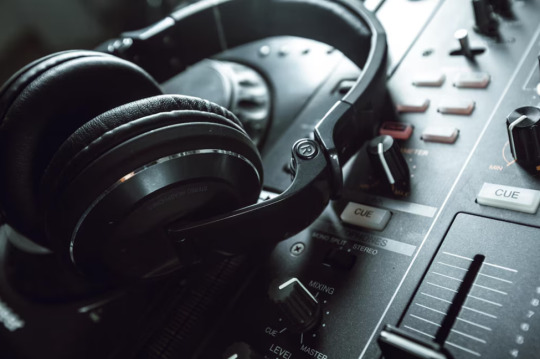
The process is initiated by choosing top-tier headphones, IEMs, DAC, and amplifiers capable of delivering perfect sound quality. If you choose headphones or IEMs that are notable for their excellence, you will be able to pick out and appreciate even the slightest quality nuances in your everyday music. Moreover, high-fidelity systems composed of great DACs and amplifiers won’t distort the pure signal and induce no coloration. This framework is significant for framework stability reasons as a good DAC and amp offer the highest sound quality endurance levels.
2. Understanding Equipment Interactions:
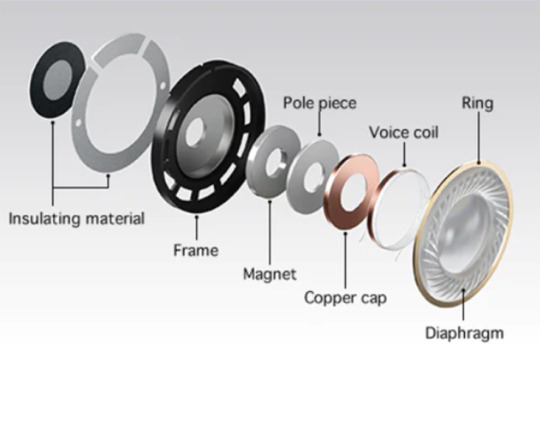
Know how each piece of gear in your audio chain interacts with one another. You will be able to avoid impedance mismatches, gain-stage properly, and understand the important elements of signal flow to maximize the performance of your equipment without having to worry about compatibility issues. Audio engineering knowledge on digital-to-analog converters, amplifier circuit designs, and headphone driver technologies will come in handy when configuring and selecting your equipment.
3. Tunning Your System

Leverage this knowledge to fine-tune your system. Use your understanding to experiment with different types of DAC filters, amplifier configurations, and headphone/IEM connections to try and achieve a sound signature that you want. Use tools like various measurements (frequency, impulse, step response, etc.), software (REW, Equalizer APO, etc.), and online audio communities to refine and make your setup feel as though it was made just for you.
4. Creating an Acoustic Environment

Appreciate how important a quiet and acoustically treated area is when it comes to listening to music. Install acoustic panels, wall treatments, and other sound-absorbing materials in your room to help reduce the clutter in the frequency response you hear from your speakers or headphones. Room size, layout, dimensions, and furniture can greatly affect how your setup sounds in the room, being able to determine that can allow you to avoid non-linear frequency responses and improve stereo imaging in most cases.
Conclusion
Becoming a perfect audiophile is an exceptional journey that is not taken lightly. Through passion, dedication, and an obsession to an incomprehensible extent, audiophiles devote much of their time to walking the path that leads to complete and utter audio nirvana. High-quality and appropriately chosen audio equipment and system sympathy are key elements in making that happen. Most of all, though, central to the audiophile journey is an unwavering obsession with a high volume of quality music, a state all enthusiasts wish to achieve. They want to achieve that with audiophile gadgets as well and, thus, they direct their craving towards capturing the sound of the best versions they can render of songs that they enjoy.
However, the desire for perfect sound is not limited to the equipment and the recording technology used in the master of the music arrangements. Audiophiles have the characteristics necessary to develop expertise in their field and improve sound quality at any cost. They seek perfection, and it is their responsibility to share their knowledge and bring new members on their side, on this quest to achieve better sound. Therefore, the ultimate audiophile audio system is not limited to the equipment used to build it. Instead, it is an environment where no distractions impact the experience of listening to music. Thanks to their knowledge, skills, and passion, audiophiles are able to advance sound quality and enter the world of no return in their quest for perfect sound. Every listening experience becomes a fantastic journey through the realms of music and life.
#audiophile#hifi#audio#music#hifiaudio#highendaudio#stereo#instahifi#audioporn#headphones#audiophiles#homeaudio#sound#turntable#speakers#recordcollection#vintageaudio#hifidelity#records#loudspeakers#highend#Inearmonitors#IEMs#DACS&S
6 notes
·
View notes